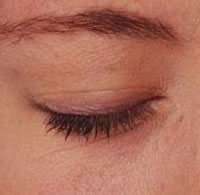 Born in Dayton, Ohio, in 1872, Paul Laurence Dunbar was the first African-American poet and novelist to attain international recognition. Now Wright State University Libraries offers a Digital Collection of Dunbar's poetry online.
Born in Dayton, Ohio, in 1872, Paul Laurence Dunbar was the first African-American poet and novelist to attain international recognition. Now Wright State University Libraries offers a Digital Collection of Dunbar's poetry online.According to the web site's biography, Dunbar's "mother, Matilda Dunbar, was a former slave with a love for poetry. His father, Joshua Dunbar, was a civil war veteran who had served in the 55th Massachusetts Volunteers, a famous regiment whose ranks were composed of African-Americans." Dunbar went to high school in Dayton with Orville Wright, worked for abolitionist Frederick Douglass at the 1893 World's Columbian Exposition in Chicago, and gained fame in 1896 when William Dean Howells published a positive review of Dunbar's second volume in Harper's Weekly; because of the widely circulated review, Dunbar "went to bed destitute and woke up on the morning of his twenty-fourth birthday as one of the most famous living Americans of African descent."
On the web site, you can read Dunbar's most frequently anthologized poem, "We Wear the Mask," as well hundreds others in the poetry index or the five browsable volumes.
 poetrymagazines.org.uk is a new British poetry archive that offers "free access site to the full-text digital library of 20th and 21st century English poetry magazines from the Poetry Library collection." Includes full text search, with an advanced search option.
poetrymagazines.org.uk is a new British poetry archive that offers "free access site to the full-text digital library of 20th and 21st century English poetry magazines from the Poetry Library collection." Includes full text search, with an advanced search option.





















 ms.dsk is reading
ms.dsk is reading  Rob Koelling is reading
Rob Koelling is reading  S. Renee Dechert is reading
S. Renee Dechert is reading  Mary Ellen Ibarra-Robinson is reading
Mary Ellen Ibarra-Robinson is reading  Bill Hoagland is reading
Bill Hoagland is reading  Jennifer Sheridan is reading
Jennifer Sheridan is reading  Robyn Glasscock is reading poetry by
Robyn Glasscock is reading poetry by  Susan Watkins is reading
Susan Watkins is reading